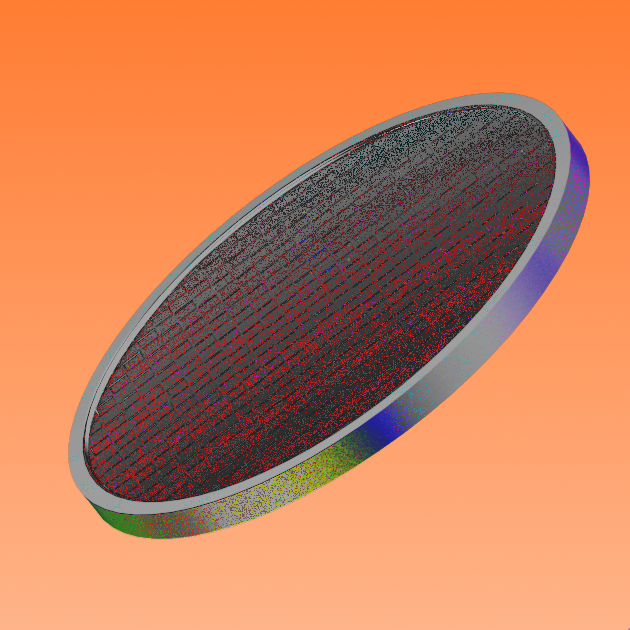Top DeFi coins in 2025 | A list of popular DeFi tokens
We cover some of the most popular DeFi coins on the market in 2025 and explain their utility and tokenomics.
By Mrig P

Decentralized finance (DeFi) has emerged as one of the most promising use cases for blockchain and cryptocurrencies. With applications like staking, liquidity pools, lending, and yield farming, it has provided a wide range of financial instruments without the need for a centralized infrastructure or intermediaries.
As a result, DeFi coins, which play a crucial role in facilitating these transactions, have become essential among crypto users.
This article takes a closer look at some of the largest DeFi coins by market capitalization.
Uniswap (UNI)
Uniswap is a decentralized exchange (DEX) built on Ethereum. The DEX allows users to trade ERC-20 tokens with smart contracts called liquidity pools instead of relying on a central intermediary and an order book to match buyers and sellers.
UNI is the native token of Uniswap. The DEX airdropped 400 UNI tokens (worth ~$1,500 dollars at the time, and up to a high of $17,000 for users that held through April 2021) to any user who had interacted with the platform before September 1, 2020.

UNI token
- Governance: UNI holders can vote on the platform’s protocols, with more tokens held yielding greater decision-making power.
- Treasury ownership: Collective ownership of UNI’s community treasury, which is used to fund grants for the UNI protocol.
- Protocol fee switch: UNI token holders can enact a protocol fee switch that would entitle all UNI token holders to earn a small percentage of the total trading fees collected by the protocol.
Uniswap price and market cap metrics
- Price: $3.93 - $18.71 (two-year range)
- Market cap: $2.97B - $11.59B (two-year range)
- Total supply: 1 billion tokens
LIDO DAO (LDO)
Lido is a liquid staking solution that aims to solve illiquidity, immovability, and inaccessibility problems that come with staking cryptocurrencies in blockchain networks using the Proof of Stake (PoS) mechanism.
The way it achieves this is simple: it issues tokens against staked funds in a 1:1 ratio, and users can use these tokens to participate in on-chain activities like lending and borrowing.
Different blockchain networks have different staked tokens and they’re named by adding an “st” prefix to the original crypto token. For instance, if users stake Ether with Lido DAO, they receive stETH, which can be used to earn yield and staking rewards, just like regular ETH. When users decide to redeem the cryptocurrencies they staked, the staked tokens are burned.

Lido token
LDO is a governance token. LDO token holders can’t do much besides voting on protocol upgrade proposals and deciding on key parameters like platform fees.
LDO price and market cap metrics
- Price: $0.91 - $3.64 (two-year range)
- Market cap: $816.6M - $3.37B (two-year range)
- Total supply: 1 billion tokens
Aave (AAVE)
Aave is a non-custodial lending protocol that allows users to borrow assets from a liquidity pool or lend assets and earn interest.
Aave (AAVE) started as ETHlend (LEND) in 2017 as a peer-to-peer lending and borrowing platform that matched borrowers and lenders. The platform ran into liquidity issues during the 2018 bear market and faced difficulties in matching loan requests to offers.
The team made significant changes to the underlying technology of the platform and launched ETHLend as Aave, which leveraged the liquidity pool model instead of a peer-to-peer model. So, instead of lending and borrowing directly with each other, Aave allowed users to lend their assets to a pool (aka add liquidity), and others could borrow from it for a specified interest rate.

AAVE token
- Governance: AAVE token holders can vote on Aave Improvement Proposals (AIPs) created to update the protocol or its policies.
- Staking: In exchange for staking AAVE in the protocol’s safety module, which protects the protocol against shortfalls, token holders will get safety incentives and obtain a portion of the protocol’s trading fees.
Aave price and market cap metrics
- Price: $50.09 - $383.49 (two-year range)
- Market cap: $722.55M - $5.74B (two-year range)
- Total supply: 16 million tokens
Maker (MKR)
Maker is a DeFi project that allows users to generate DAI, a decentralized stablecoin, by putting up any supported Ethereum-based asset as collateral.
If users want to redeem their collateral, they have to pay back their DAI loan along with the platform fees. In the event that the users can’t repay their loan, the protocol will liquidate the assets.

MKR token
- Governance: MKR token holders can participate in on-chain governance of the Maker Protocol.
- Stability fee: All collateralized debt position holders who have borrowed DAI accrue a stability fee which can only be paid in MKR.
MKR price and market cap metrics
- Price: $622.78 - $3,964.51 (two-year range)
- Market cap: $555.3M - $3.67B (two-year range)
- Total supply: 874K tokens
THORChain (RUNE)
THORChain is a blockchain built as a decentralized exchange that allows anyone to swap two assets based on two different chains without the need for a centralized intermediary. It uses the Proof of Stake consensus protocol and has a native DeFi coin called RUNE.

RUNE
- Concentrating liquidity: THORChain uses RUNE as a settlement asset to concentrate liquidity for every asset. This ensures that there’s only a single pool with RUNE as the base pair for each asset instead of dozens of shallow pools.
- Staking: Users who bond (stake) their RUNE become active validators and earn a portion of swap fees and block rewards.
- Governance: Users who have set up THORnodes and staked RUNE receive voting power — every THORnode gets one vote which they can use to change network parameters through a governance mechanism called node-mimir.
RUNE price and market cap metrics
- Price: $0.79 - $10.62 (two-year range)
- Market cap: $246.7M - $3.19B (two-year range)
- Total supply: 425.7 million tokens
dydx (DYDX)
dydx is a decentralized exchange that enables users to trade perpetual contracts and spot-trade cryptocurrencies.
Unlike other decentralized exchanges that use automated market makers (AMMs), dydx uses off-chain matching engines like centralized exchanges to conduct trades. The crypto exchange was developed on the Ethereum blockchain and uses Starkware, a Layer-2 solution, to reduce Ethereum gas fees.

DYDX token
- Governance: Although there’s no official DAO in place, community members can vote on protocol developments.
- Incentivize trading: DYDX holders receive a discount on trading fees and receive additional token rewards through the trade-to-earn program.
- Staking: Users who stake their token in the safety module receive more DYDX tokens.
DYDX price and market cap metrics
- Price: $0.55 - $4.38 (two-year range)
- Market cap: $419.4M - $1.87B (two-year range)
- Total supply: 761 million tokens
Curve DAO (CRV)
Curve is a DEX that enables users to trade assets that are similar in nature, like stablecoins.
The trading fee on Curve is very low. While Uniswap collects a 0.3% trading fee, Curve only charges 0.04%. This price reduction may not look like much, but it makes a significant difference for large-volume trades.

CRV token
Curve’s native token is CRV, which has three main use cases. All of them involve locking CRV tokens to obtain vote-escrowed (veCRV) tokens, which are simply CRV tokens locked for a certain time.
- Governance: CRV token holders can use their veCRV tokens to vote on governance proposals and protocol parameter changes.
- Staking: Those who stake CRV tokens can earn rewards collected from the protocol’s trading fees.
- Boosting: CRV token holders who have provided liquidity, vote locked, and staked their tokens get a rewards boost of 2.5x on the liquidity provided.
CRV price and market cap metrics
- Price: $0.22 - $1.26 (two-year range)
- Market cap: $246.9M - $1.55B (two-year range)
- Total supply: 2.2 billion tokens
PancakeSwap (CAKE)
PancakeSwap is a decentralized exchange that’s native to the BNB chain (previously Binance Smart Chain). And it works exactly like Uniswap.

CAKE tokens
- Staking: Users can earn free tokens by staking CAKE tokens in its Syrup Pools (liquidity pools).
- Lottery: Users can purchase CAKE tokens to participate in its lottery.
- Minting NFTs: CAKE token holders can create their own profile and start minting NFTs.
- Governance: CAKE holders can vote on proposals related to the protocol.
PancakeSwap price and market cap metrics
- Price: $1.06 - $5.12 (two-year range)
- Market cap: $237.3M - $1.23B (two-year range)
- Total supply: 375.6 million tokens
Compound (COMP)
Compound is a decentralized protocol that enables users to supply collateral assets to smart contracts that anyone can borrow against without the need for an intermediary.
Like many other DeFi projects, Compound was initially a centralized protocol. Its second version introduced progressive decentralization with a governance token.

COMP token
COMP is the governance token of Compound. COMP tokens can also be used as collateral to borrow assets on the platform.
Compound price and market cap metrics
- Price: $26.12 - $120.18 (two-year range)
- Market cap: $179M - $1.08B (two-year range)
- Total supply: 10 million tokens
1Inch (1INCH)
1Inch is a DEX aggregator that helps users find the best possible token price by gathering data from all the top decentralized exchanges. It currently facilitates trades across five blockchain networks: Ethereum, BNB Chain, Polygon, Arbitrum, and Optimism.
The platform’s native token is called 1INCH and is available on Ethereum and Binance Smart Chain.

1INCH token
- Utility: 1INCH tokens are used in the liquidity protocol as a connector between two cryptocurrencies or tokens to achieve high-efficiency routing.
- Governance: 1INCH holders can vote on the network's current and future protocols.
1Inch price and market cap metrics
- Price: $0.19 - $0.68 (two-year range)
- Market cap: $230.2M - $871.2M (two-year range)
- Total supply: 1.5 billion tokens
Yearn Finance (YFI)
Yearn Finance is a suite of DeFi protocols that helps investors, DAOs, and other protocols manage their passive earnings from their digital assets.
It has partnered with multiple DeFi protocols like SushiSwap and C.R.E.A.M to provide token swaps, insurance, and lending services. It’s also well-known for its vaults that automate yield farming for crypto users.

YFI token
Yearn Finance launched YFI in 2021 and gave away all 30,000 tokens to its users.
YFI can be used for governance and allows its token holders to receive a portion of the trading fees the platform earns.
Yearn Finance price and market cap metrics
- Price: $4,482 - $14,405 (two-year range)
- Market cap: $150.5M - $479.2M (two-year range)
- Total supply: 36,666 tokens
Balancer (BAL)
Balancer is a decentralized exchange (DEX) that works similarly to Uniswap. It’s an automated market maker that allows users to swap tokens.
The difference is that in addition to providing liquidity pools in a 1:1 ratio, Balancer also provides weighted pools with up to eight tokens, stablecoin pools, and custom logic pools.

BAL token
BAL is used for governance and users can also lock their BAL tokens to get veBAL (vote-escrowed BAL) tokens, which unlocks a host of benefits like boosts that allow them to earn more BAL over time.
Balancer price and market cap metrics
- Price: $1.37 - $7.30 (two-year range)
- Market cap: $85.6M - $334.2M (two-year range)
- Total supply: 67.5 million tokens
Rocket Pool (RPL)
Rocket Pool is a liquid staking protocol that allows users to stake ETH by depositing as little as 0.01 ETH.
Once a user deposits ETH to stake it, they receive rETH tokens that they can use on other protocols or simply hold in their wallet.

RPL token
RPL is the native token and its primary use is to allow holders to vote on protocol-related decisions.
Rocket Pool price and market cap metrics
- Price: $4.92 - $59.06 (two-year range)
- Market cap: $104.2M - $1.14B (two-year range)
- Total supply: 21.2 million tokens
Begin your DeFi journey with MoonPay
Now that you know the top DeFi coins, you can begin your DeFi journey with MoonPay.
To get started, simply buy cryptocurrency via MoonPay using your credit card or any other preferred payment method. You can also top up your wallet with euros, pounds, or dollars and use your MoonPay Balance to purchase DeFi tokens listed in this article. With MoonPay Balance, you'll enjoy faster transactions, lower fees, and higher approval rates.
MoonPay also makes it easy to sell crypto like ETH when you decide it's time to cash out. Simply enter the amount of the token you'd like to sell and enter the details where you want to receive your funds.
Swap DeFi coins
Want to exchange DeFi coins like AAVE and COMP for other cryptocurrencies like Ethereum and Bitcoin?
MoonPay allows you to swap crypto cross-chain with competitive rates, directly from your non-custodial wallet.






